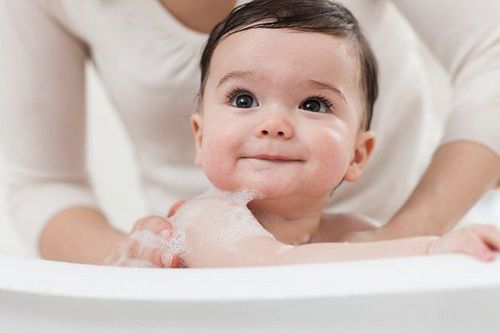This is an automatically translated article.
Recognizing the external characteristics of a full-term newborn will help parents have more knowledge to care for the baby right after birth and when returning home from the hospital. So what are the external characteristics of a full-term newborn?
1. External characteristics of a full-term newborn
A full-term newborn is defined as a child with a gestational age of 9 months and 10 days in the mother's womb, calculated by weeks of gestation, between 38 and 42 weeks, with an average of 40 weeks, based on gestational age is about 278 days - 280 days (calculated from the first day of the mother's last menstrual period).
External characteristics of full-term newborns are expressed through the standards of length, weight, head circumference indexes, chest circumference as well as external physical characteristics and muscle tone.
1.1 Length, weight and parameters
Length: >45cm, average is 50cm. Weight: average > 2500g, girls from 2900-3000g, boys from 3000-3100g. Head circumference: 32 - 35cm, bust 33 - 34cm. Anterior fontanel: 2.5 - 3cm. Limbs: The lower and upper limbs are roughly equal and equal to one-third of the body length.
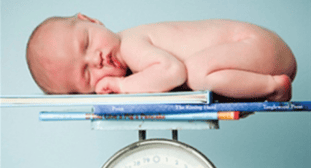
Dựa vào cân nặng tiêu chuẩn để bác sĩ xác định trẻ sinh đủ tháng
1.2 Appearance
Physical characteristics of newborns are as follows:
Skin: Soft and ruddy, with little fluff, developed fatty layer under the skin, the soles of the feet have many wrinkles. Hair, nails: The hair is soft and long, the nails of the limbs are long and cover the fingers. Forehead: Wide forehead Ear: Cartilage of the auricle is hard, the auricle has an even and rounded curvature. Nipples: Nipples are pigmented and raised about 2mm. Genitals: In boys, the testicles develop and are located in the scrotum, the surface of the scrotum has many wrinkles. In girls, the labia majora has developed and covers both the vulva and the labia minora.
1.3 Muscle tone
The infant's external characteristics in terms of muscle tone are as follows:
The infant contracts more than stretches, when lying down, the limbs are flexed, the thighs and shins form a 90 degree angle. When the child's forearm is stretched and released, the child contracts. When the child's foot is brought into contact with a hard surface, the child's foot has a push reflex.
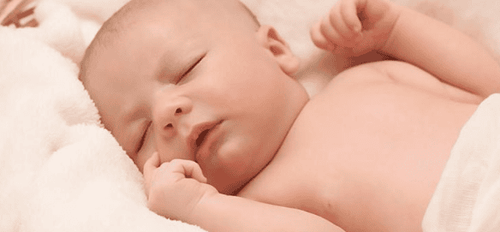
Đặc điểm bên ngoài trẻ sơ sinh đủ tháng
2. Characteristics of full-term infants
Regarding the physiological functions, the full-term newborn's characteristics are as follows:
Respiration: The infant's breathing rate is from 40 to 60 times/minute, sometimes breathing is irregular or short breathing, but this condition will disappears 1-2 hours after birth. After that, the child stabilizes his breathing rate 40-45 times/minute. Circulatory and Cardiovascular: Children's heart rate is usually fast, fluctuates between 140-160 beats/minute, then stabilizes, depending on breathing rate. The child's ECG is often enlarged with a slightly skewed heart-to-thoracic ratio to the right. Hematology: After birth, the number of red blood cells, white blood cells and Hematocrit is usually high but then gradually decreases with age. Nervous: Children are often in a state of excitement and excitability. The cerebral cortex has few wrinkles but the number of brain cells is high. Electrolyte balance: Full-term neonates are characterized by larger kidneys and electrolyte retention. Therefore, potassium and sodium levels in the blood are easily increased. 3 days after giving birth, the kidneys begin to excrete urine well. Metabolism: When the baby is in the mother's womb, the liver is responsible for making blood. After the baby is born, the liver gradually develops and transforms into a metabolic function. This functionality continues to be improved.

Trẻ sinh đủ tháng dễ bị kích động và trong trạng thái hưng phấn
Regarding the senses, the full-term newborn baby's characteristics are as follows:
Touch: The baby's sense of touch is well developed, but the sweat glands are not yet active. Hearing: Children's hearing is well developed, when there are noises, they can startle them. Smell: Children's sense of smell is relatively dark, when there is a pungent smell, they may sneeze. The sense of smell continues to develop and the baby will gradually distinguish the smell of the mother. Taste: Children's taste buds develop, they can distinguish between sweet flavors. Vision: The baby's eyesight is not yet developed, the baby cries but has no tears because the tear glands have not yet developed.
3. Caring for a full-term newborn
Care of a full-term newborn includes care immediately after birth and day-to-day care in the hospital and after returning home.
3.1 Caring for a full-term newborn after birth
Right after birth, babies need to be cleaned to help clear the nasopharyngeal tract. Use a warm, dry towel to wipe the baby's entire body. Cut the baby's umbilical cord with a tool (steamed at 120 degrees Celsius and for 30 minutes). Note, do not apply medicine to the baby's navel, bandage the baby's umbilical cord with a sterile bandage. Assess the child's health status using the Apgar table. Check the baby's whole body for birth defects, if any. Warm the baby and place him on his side.
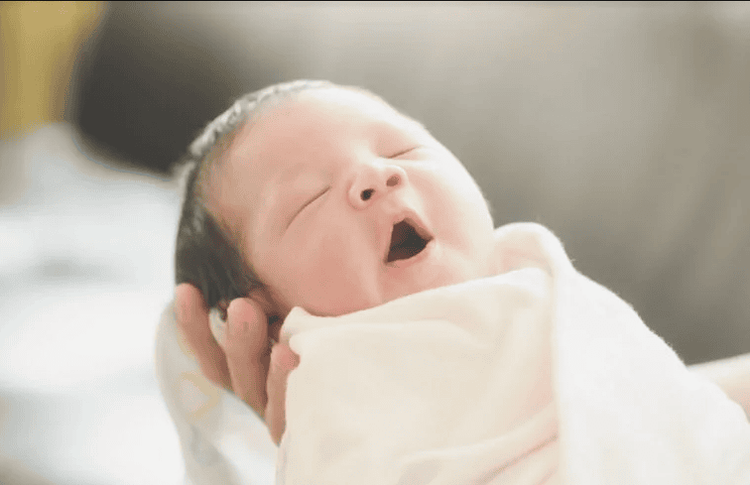
Ba mẹ nên chú ý ủ ấm cho trẻ sơ sinh
3.2 How to take care of a full-term newborn every day?
Breastfeed as soon as possible and as soon as possible. No later than 1 hour after birth. The frequency of breastfeeding is from 6 to 12 times a day and depends on the needs of the baby. Observe the newborn's external features: Observe the color of the skin to promptly detect jaundice (which can be neonatal jaundice or pathological jaundice), or cyanosis and other abnormalities (such as nodules, ...). Monitor respiration, heart rate and body temperature: Monitor whether the child's breathing rate reaches 40 - 60 times/minute, heart rate 120 times/minute, body temperature 36 - 37 degrees Celsius, frequency of bowel movements during the day, characteristics stools, abdomen feels distended or soft. Umbilical care: When the baby has not shed the umbilical cord, it is necessary to take care of and change the bandage every day, to avoid getting the umbilical cord wet. In case of detecting wet or pus-filled navel, the baby should be examined by a doctor soon.
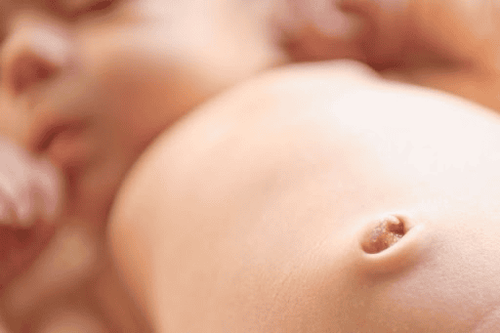
Việc chăm sóc rốn cho trẻ sơ sinh rất quan trọng
Skin care: Taking care of a full-term newborn should be careful not to wipe off the causative agent (the white substance on the baby's skin after birth because of its protective and heat-retaining effect). Use a soft and clean towel to absorb the causative agent in areas with folds such as the neck, armpits, and groin. 2 days after birth, the nurse or mother can use a warm, wet washcloth to wipe the baby. In the following days, the newborn can be bathed with warm water and wiped from the upper half to the lower half. Dry and warm the baby from top to bottom. In particular, after bathing a newborn, it is necessary to place the child on his side to avoid reflux of stomach into the lungs. Taking care of the child's living space: Taking care of a full-term newborn should pay attention to the well-ventilated, clean, lighted room, avoid drafts, the room temperature is between 28 - 30 degrees Celsius. Check the baby regularly, Avoid letting the child get wet. External characteristics of a full-term newborn are expressed through standards such as weight, length and body shape, helping to assess the child's overall health and development.
As a key area of Vinmec Health system, Pediatrics Department always brings satisfaction to customers and is highly appreciated by industry experts with:
Gathering a team of top doctors and nurses in Pediatrics : consists of leading experts with high professional qualifications (professors, associate professors, doctorates, masters), experienced, worked at major hospitals such as Bach Mai, 108.. Doctors All doctors are well-trained, professional, conscientious, knowledgeable about young psychology. In addition to domestic pediatric specialists, the Department of Pediatrics also has the participation of foreign experts (Japan, Singapore, Australia, USA) who are always pioneers in applying the latest and most effective treatment regimens. . Comprehensive services: In the field of Pediatrics, Vinmec provides a series of continuous medical examination and treatment services from Newborn to Pediatric and Vaccine,... according to international standards to help parents take care of their baby's health from birth to childhood. from birth to adulthood Specialized techniques: Vinmec has successfully deployed many specialized techniques to make the treatment of difficult diseases in Pediatrics more effective: neurosurgery - skull surgery, stem cell transplantation. blood in cancer treatment. Professional care: In addition to understanding children's psychology, Vinmec also pays special attention to the children's play space, helping them to have fun and get used to the hospital's environment, cooperate in treatment, improve the efficiency of medical treatment. To register for examination and treatment with Pediatricians at Vinmec International General Hospital, please click the "Contact Us" button on the website or register online HERE.
Instructions on how to dress a newborn baby - Together with the mother to take care of the baby properly
MORE:
Newborn Nutrition Guide Step by step guide to infant bathing Complete guide to newborn care






